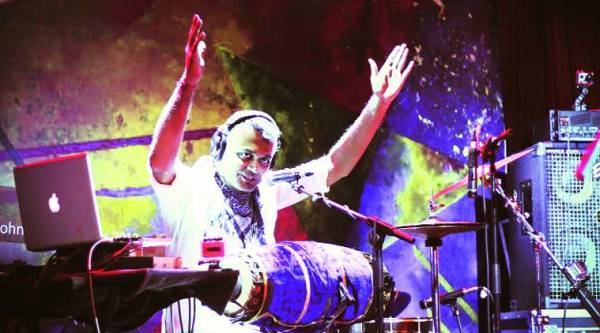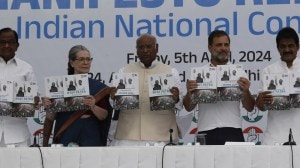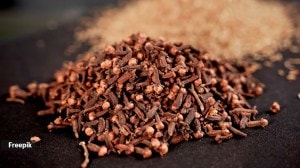- India
- International
Play it on Loop
The loop machine, being used by an array of Indian acts to create different kinds of music, will be in focus at a gig this week.
 Rajgopalan has created a unique classical drum set, which he combines with a loop machine.
Rajgopalan has created a unique classical drum set, which he combines with a loop machine.
For his live gigs, Vivek Rajgopalan sits ensconced in his specially-designed “drum kit”. This is not a Neil Peart-esque set up, where the drummer of the iconic band Rush has cymbals, tom-toms and drums of varying pitches at his disposal. Rajgopalan keeps it simple but unique — a bass drum, a snare, hi-hats, a chenda, a mridangam, and a kanjira are combined with electronics, a MIDI keyboard, Abelton Live, and the piece de resistance, a looping machine. He says, “Earlier, I would perform just one track with the loop machine. Now, I use it for the entire concert.”
Using this combination of instruments, Rajgopalan creates music that falls between the Asian underground sound and something completely new. He, along with other loopers, Sidd Couto and Mr Woodnote & Lil Rhys, will showcase how they use the simple loop machine in different ways to make music at a gig at Blue Frog today.
The technique of looping isn’t new. It has existed since the ’40s, when technicians and producers such as Pierre Schaeffer and Karlheinz Stockhausen used tapes to loop sounds. The technique went on to influence a host of artistes, from The Beatles to Bjork. But the modern form, which has existed since the ’90s, involves using hardware that you can pass sounds through to loop it live.
Mr Woodnote, a saxophonist from Australia who moved to the UK to find his fortune in the industry, made fans with his looping talent as a busker in Bristol. “Playing on the street with a loop station was way better than working in a pub or in an office,” says Mr Woodnote, who creates soundscapes with his wind instrument and combines them with beatboxing. It was in 2008 that Mr Woodnote met the renowned street performer Dub FX, and a collaboration with him catapulted Mr Woodnote on the world stage.
The persuasions of artistes turning to loop stations vary. For Sidd Couto, it was the launch of his solo album Sunny Side Up in 2011 that made him attempt the technique. “I realised that if I am releasing a solo album, I should be able to play all the instruments on the songs alone,” he explains. Rajgopalan, who is a classically-trained percussionist, was excited with the possibilities of improvising with the instrument.

“Sometimes, even I don’t know what the final product of a song I am playing live will be, but it always comes together. This unpredictability on stage — and the fact that the audience can feel it — is what I love about looping,” says the artiste, who will play alongside a violinist, a bass player and a vocalist.
The interest in the humble loop machine is increasing, especially with bands experimenting with electronic sounds in their music. Couto says, “The best part is that each looper will bring something new to the table.
It always sounds different.” There are others such as classical singers Vasudha Sharma and Mahesh Vinayakram who loop vocals over vocals to create driving harmonic a capellas. “When I started six years ago, there were few who had heard of a loop machine. Now, one in every 15 musicians is experimenting with it,” adds Couto.
While it is intriguing how a solo artiste creates music that would otherwise require a whole band, the novelty during a live gig runs out soon. The artistes second this. Rajgopalan says that the music needs to take over at some point. Couto believes that the crowd’s entire focus rests on the solo performer. “You have to make your performance more engaging,” he says.
kevin.lobo@expressindia.com
Apr 25: Latest News
- 01
- 02
- 03
- 04
- 05








































